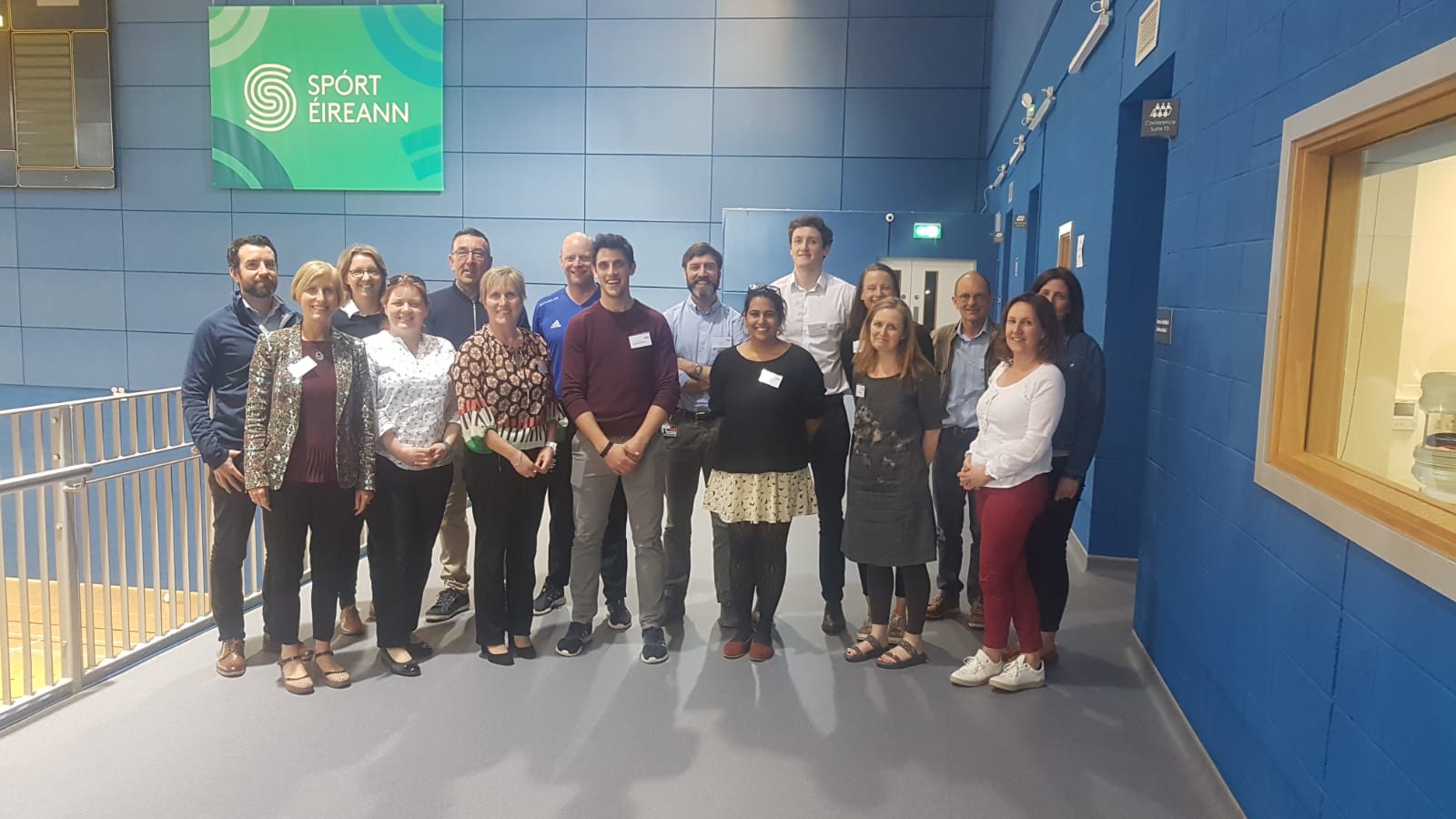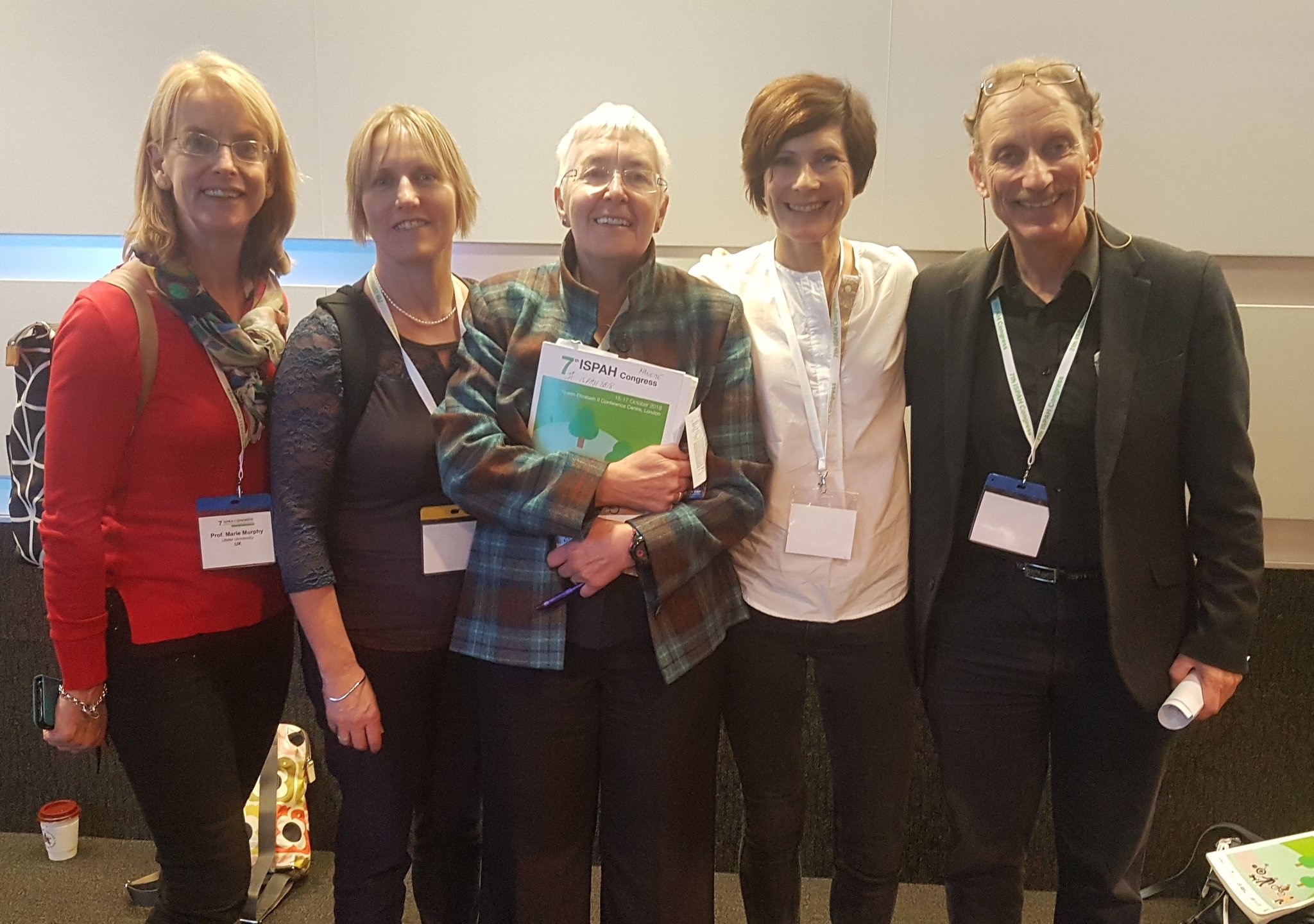Impact of COVID-19 on our physical activity habits.
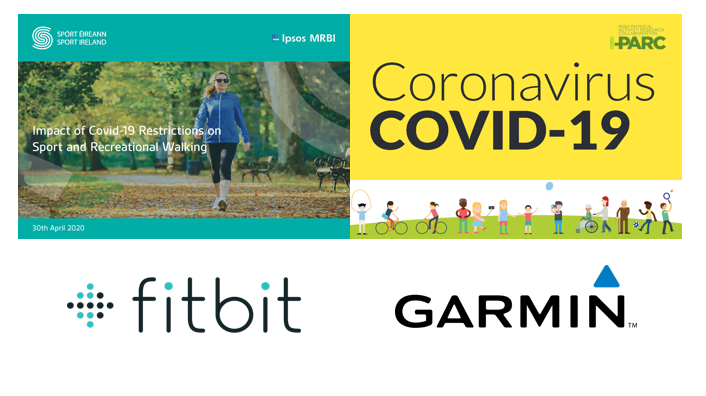
Physical activity can be a valuable tool to continue protecting your health during this time. As we continue to self-isolate, it is important to stay physically active while in your home or within 2km of you home. Physical activity comes with a number of physical, mental and social health benefits for all ages. As the COVID-19 pandemic continues to evolve, it has played a role in the physical activity levels of populations across the globe.
What has happened to peoples physical activity during the COVID-19 pandemic?
On the 23rd of March, Fitbit shared data that showed data collected from their 30 million users around the world. The key finding was that almost all countries studied saw a decline in the average step count compared to the same time last year. This percentage decline in steps varied from country to country, ranging from 7% to 38%. Fitbit users in Ireland saw a 9% reduction in the number of steps achieved on the week ending 22nd March 2020. This could be due to a number of reasons, including the change in lifestyle as some people became unable to work or began working/studying from home meaning a reduction in occupational and transport (i.e. travel to/from work and college/school) activities.
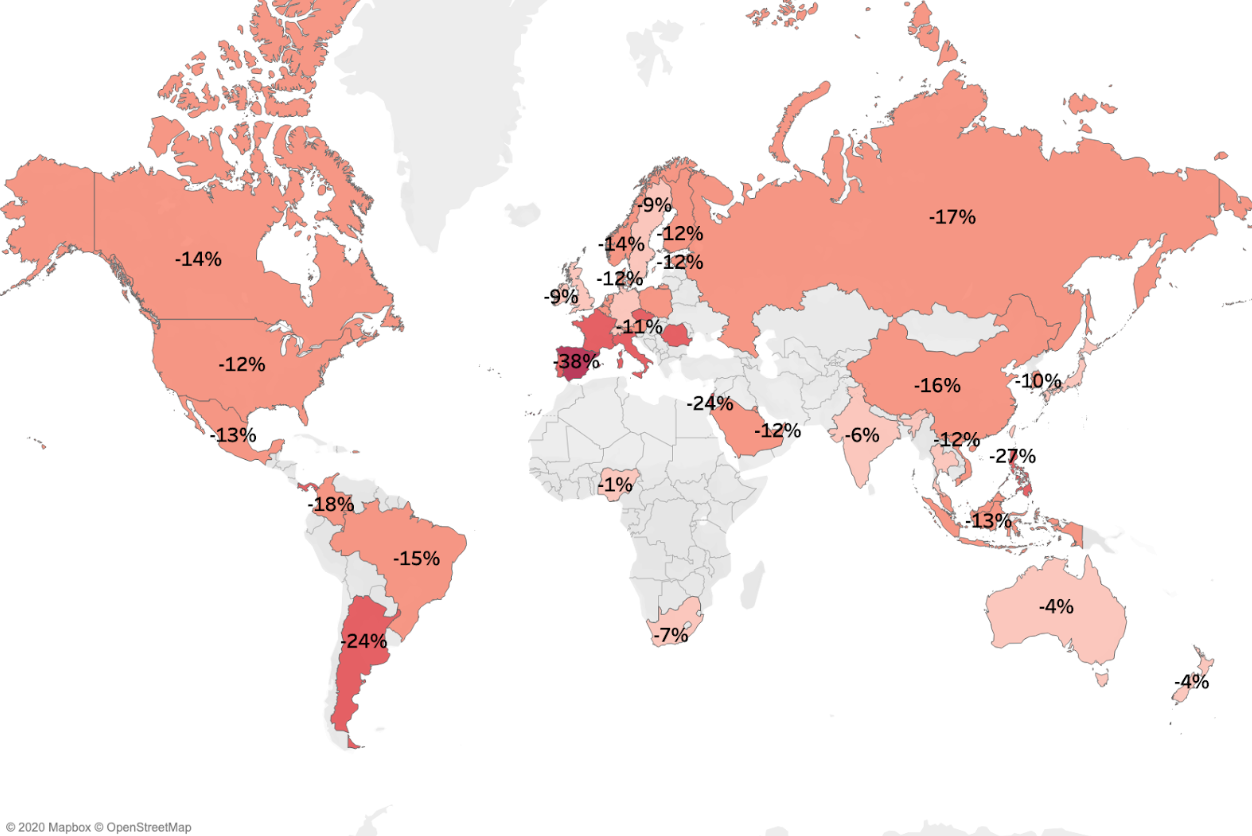
The same trend was captured by Garmin, who also manufacture wearable fitness trackers and smartwatches. The company said that it found a “massive decline in the overall number of steps taken during the second two weeks of March”. What was interesting in the data, was the increase in Garmin device users taking part in virtual cycling classes (up 64%), practicing yoga for its dual physical and emotional benefits (up 11%), and going on outdoor strolls (up 36%) as a way to escape the house for a few moments a day during quarantine. This data begins to show how people began to adapt their recreational activities to the change in lifestyle due to mandatory government restrictions.
What has been the impact of the COVID-19 restrictions on the Irish Populations sport and recreational walking?
On the 30th of April 2020, Sport Ireland published a report showing how Irish adults (!5+ years of age) physical activity habits have adapted during the COVID-19 restrictions. The research, conducted by Ipsos MRBI on behalf of Sport Ireland, saw just over a 1,000 people complete a survey asking about the previous week on three occasions:
- 28th February to the 9th March (i.e. pre dates major limitations on movement)
- 16th March to the 31st March (i.e. Delay Phase)
- 1st April to the 13th April (i.e. Stay at Home Phasse)
The research reveals that Irish adults have adapted remarkably well in keeping up their sport and recreational walking habits during this difficult period. More adults are now physically active than before the restrictions were introduced with a substantial increase in the numbers walking for recreation. In addition, the numbers running and cycling increased during this period, while the closure of many sports facilities and curtailment of team-based sports caused a decline in personal exercise(gym-based activities), swimming and gaelic football among others.
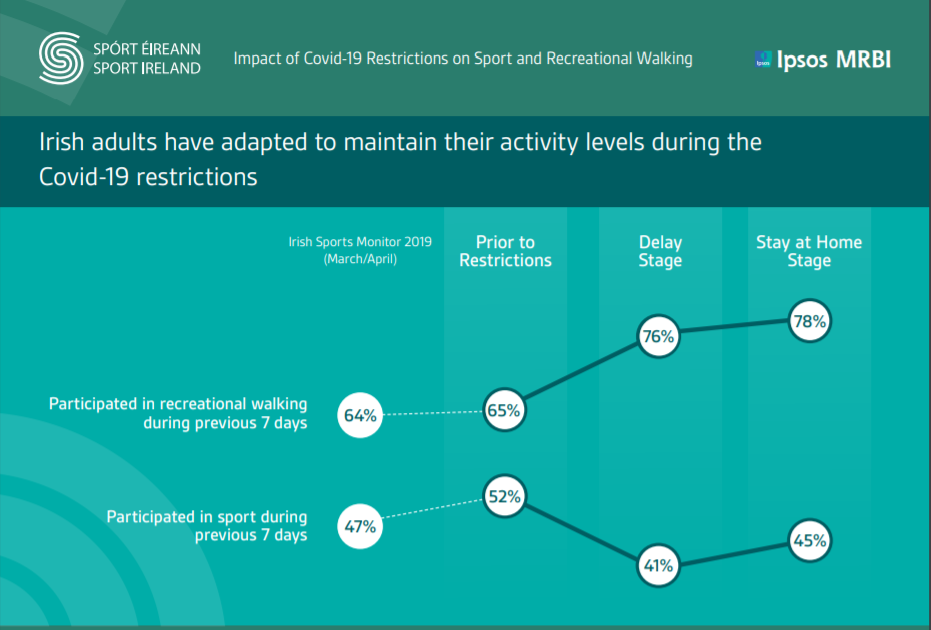
Key Figures from the Sport Ireland report
- Additional 500,000 regular walkers; 450,000 runners; 220,000 cyclists
- Percentage of inactive adults drops 8% from same period in 2019
- Active adults report significantly higher levels of self-rated physical health compared to inactive adults.However, limited difference exists in respect of other measures of wellbeing.

Minister of State for Tourism and Sport, Brendan Griffin TD, noted that “The decline in the number of inactive people is also welcome and in line with measures outlined in the National Sports Policy. I commend the great work being done by the National Governing Bodies for Sport and the Sport Ireland Local Sports Partnership Network in providing opportunities and guidance on staying physically active. These organisations will continue to have a big role to play in keeping Ireland physically active and participating in sport once the current restrictions are eased.”
Check out the full report by clicking here
How active should we be?
The World Health Organization recommends that:
Children and adolescents aged 5-17 years
- Should do at least 60 minutes of moderate to vigorous-intensity physical activity daily.
- Physical activity of amounts greater than 60 minutes daily will provide additional health benefits.
- Should include activities that strengthen muscle and bone, at least 3 times per week.
Adults aged 18–64 years
- Should do at least 150 minutes of moderate-intensity physical activity throughout the week, or do at least 75 minutes of vigorous-intensity physical activity throughout the week, or an equivalent combination of moderate- and vigorous-intensity activity.
- For additional health benefits, adults should increase their moderate-intensity physical activity to 300 minutes per week, or equivalent.
- Muscle-strengthening activities should be done involving major muscle groups on 2 or more days a week.
Adults aged 65 years and above
- Should do at least 150 minutes of moderate-intensity physical activity throughout the week, or at least 75 minutes of vigorous-intensity physical activity throughout the week, or an equivalent combination of moderate- and vigorous-intensity activity.
- For additional health benefits, they should increase moderate-intensity physical activity to 300 minutes per week, or equivalent.
- Those with poor mobility should perform physical activity to enhance balance and prevent falls, 3 or more days per week.
- Muscle-strengthening activities should be done involving major muscle groups, 2 or more days a week.





